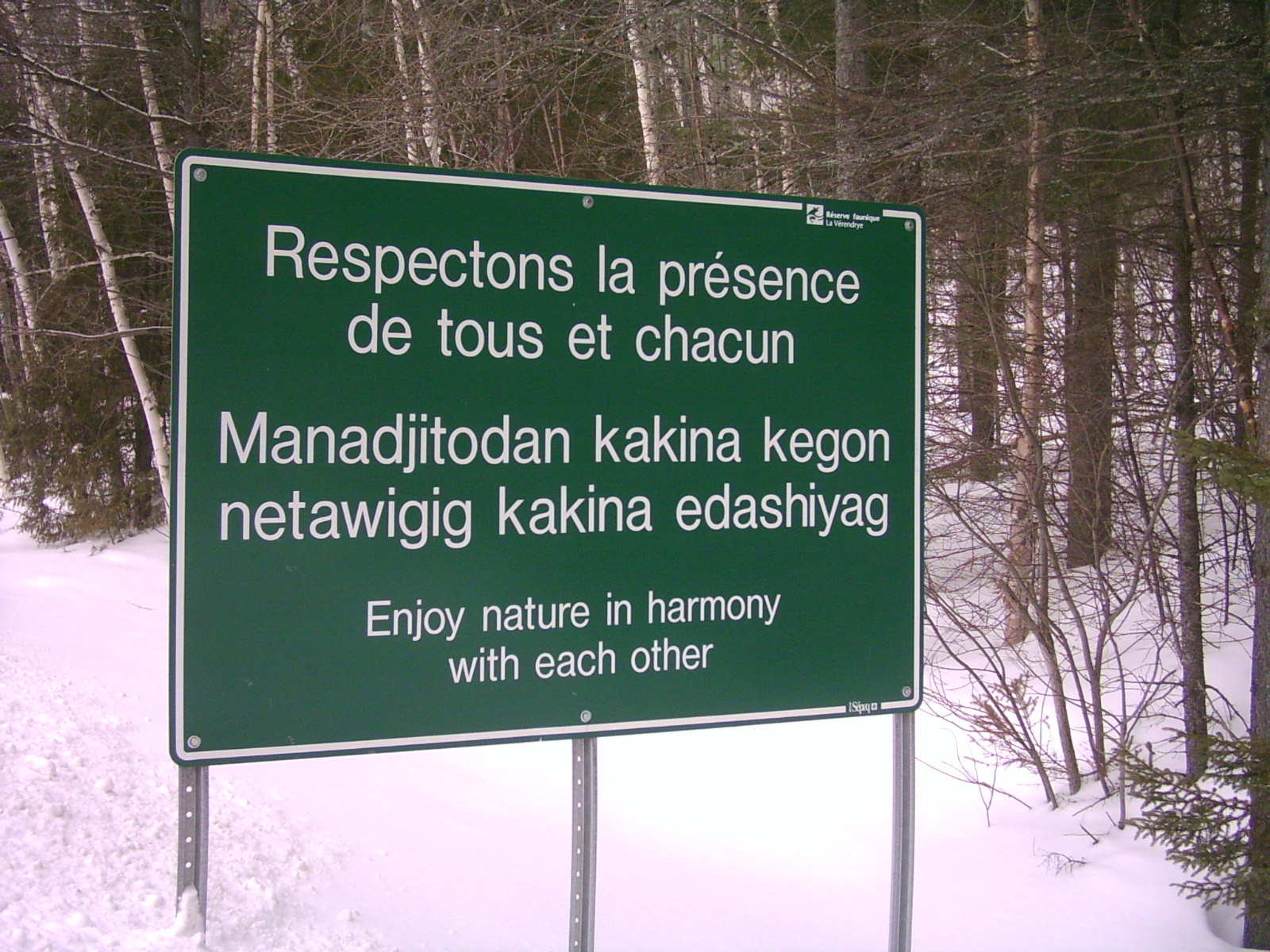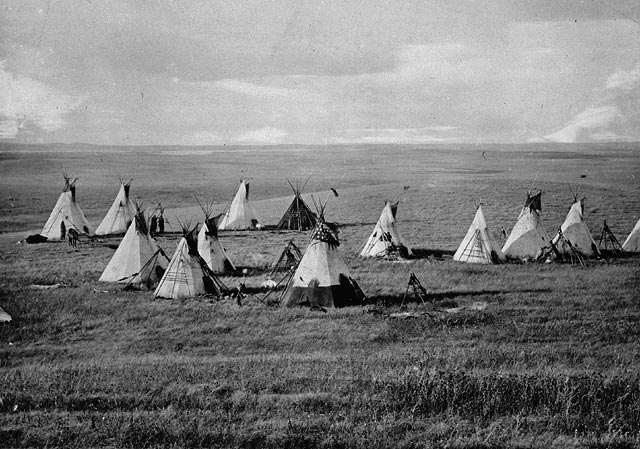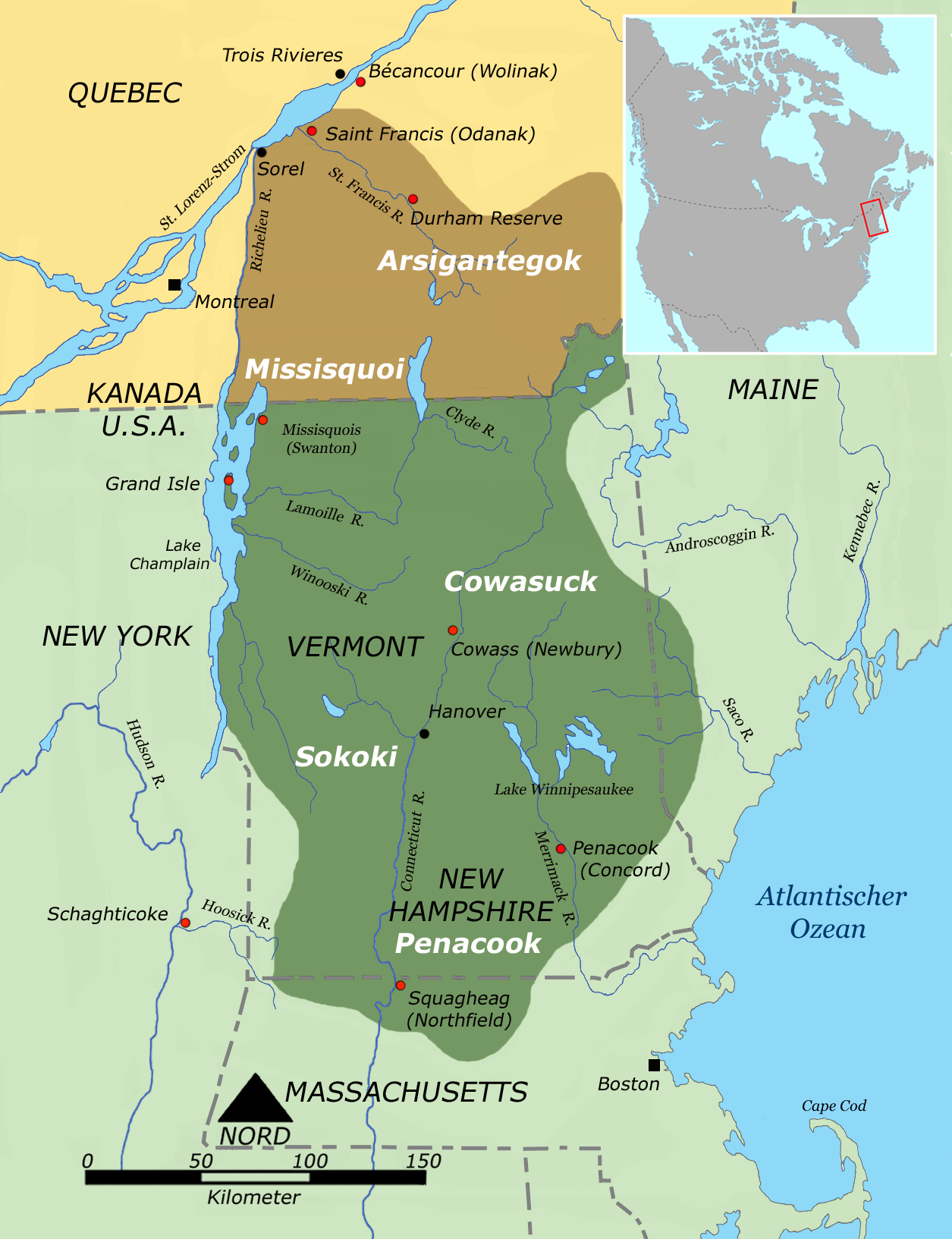|
Algonquin Language
Algonquin (also spelled Algonkin; in Algonquin: or ) is either a distinct Algonquian language closely related to the Ojibwe language or a particularly divergent Ojibwe dialect. It is spoken, alongside French and to some extent English, by the Algonquin First Nations of Quebec and Ontario. As of 2006, there were 2,680 Algonquin speakers,. less than 10% of whom were monolingual. Algonquin is the language for which the entire Algonquian language subgroup is named; the similarity among the names often causes considerable confusion. Like many Native American languages, it is strongly verb-based, with most meaning being incorporated into verbs instead of using separate words for prepositions, tense, etc. Classification Omàmìwininìmowin (Algonquin) is an Algonquian language, of the Algic family of languages, and is descended from Proto-Algonquian. It is considered a particularly divergent dialect of Ojibwe by many. But, although the speakers call themselves '' Omàmìwi ... [...More Info...] [...Related Items...] OR: [Wikipedia] [Google] [Baidu] |
Canada
Canada is a country in North America. Its ten provinces and three territories extend from the Atlantic Ocean to the Pacific Ocean and northward into the Arctic Ocean, covering over , making it the world's second-largest country by total area. Its southern and western border with the United States, stretching , is the world's longest binational land border. Canada's capital is Ottawa, and its three largest metropolitan areas are Toronto, Montreal, and Vancouver. Indigenous peoples have continuously inhabited what is now Canada for thousands of years. Beginning in the 16th century, British and French expeditions explored and later settled along the Atlantic coast. As a consequence of various armed conflicts, France ceded nearly all of its colonies in North America in 1763. In 1867, with the union of three British North American colonies through Confederation, Canada was formed as a federal dominion of four provinces. This began an accretion of provinces and ... [...More Info...] [...Related Items...] OR: [Wikipedia] [Google] [Baidu] |
Algic
The Algic languages (also Algonquian–Wiyot–Yurok or Algonquian–Ritwan) are an indigenous language family of North America. Most Algic languages belong to the Algonquian subfamily, dispersed over a broad area from the Rocky Mountains to Atlantic Canada. The other Algic languages are the Yurok and Wiyot of northwestern California, which, despite their geographic proximity, are not closely related. All these languages descend from Proto-Algic, a second-order proto-language estimated to have been spoken about 7,000 years ago and reconstructed using the reconstructed Proto-Algonquian language and the Wiyot and Yurok languages. History The term ''Algic'' was first coined by Henry Schoolcraft in his ''Algic Researches'', published in 1839. Schoolcraft defined the term as "derived from the words Allegheny and Atlantic, in reference to the indigenous people anciently located in this geographical area." Schoolcraft's terminology was not retained. The peoples he called "Alg ... [...More Info...] [...Related Items...] OR: [Wikipedia] [Google] [Baidu] |
Cree Language
Cree (also known as Cree– Montagnais– Naskapi) is a dialect continuum of Algonquian languages spoken by approximately 117,000 people across Canada, from the Northwest Territories to Alberta to Labrador. If considered one language, it is the aboriginal language with the highest number of speakers in Canada. The only region where Cree has any official status is in the Northwest Territories, alongside eight other aboriginal languages. There, Cree is spoken mainly in Fort Smith and Hay River. Names Endonyms are: * (Plains Cree) * (Woods Cree) * (Western Swampy Cree) * (Eastern Swampy Cree) * (Moose Cree) * (Southern East Cree) * (Northern East Cree) * (Atikamekw) * (Western Montagnais, Piyekwâkamî dialect) * (Western Montagnais, Betsiamites dialect) * (Eastern Montagnais) Origin and diffusion Cree is believed to have begun as a dialect of the Proto-Algonquian language spoken between 2,500 and 3,000 years ago in the original Algonquian homeland, an ... [...More Info...] [...Related Items...] OR: [Wikipedia] [Google] [Baidu] |
Cheyenne Language
The Cheyenne language (, ) (informal spelling Tsisinstsistots), is the Native Americans in the United States, Native American language spoken by the Cheyenne people, predominantly in present-day Montana and Oklahoma, in the United States. It is part of the Algonquian languages, Algonquian language family. Like all other Algonquian languages, it has complex agglutinative polysynthetic morphology (linguistics), morphology. This language is considered endangered, at different levels, in both states. Classification Cheyenne is one of the Algonquian languages, which is a sub-category of the Algic languages. Specifically, it is a Plains Algonquian languages, Plains Algonquian language. However, Plains Algonquian, which also includes Arapaho language, Arapaho and Blackfoot language, Blackfoot, is an Sprachbund, areal rather than genetic subgrouping. Geographic distribution Cheyenne is spoken on the Northern Cheyenne Indian Reservation in Montana and in Oklahoma. On the Northern Cheyenn ... [...More Info...] [...Related Items...] OR: [Wikipedia] [Google] [Baidu] |
Blackfoot Language
The Blackfoot language, also called Siksiká (its denomination in ISO 639-3, ; Siksiká ik͡siká syllabics ), often anglicised as ', is an Algonquian language spoken by the Blackfoot or ''Niitsitapi'' people, who currently live in the northwestern plains of North America. There are four dialects, three of which are spoken in Alberta, Canada, and one of which is spoken in the United States: ''Siksiká'' (Blackfoot), to the southeast of Calgary, Alberta; ''Kainai'' (Blood, Many Chiefs), spoken in Alberta between Cardston and Lethbridge; ''Aapátohsipikani'' (Northern Piegan), to the west of Fort MacLeod which is Brocket (Piikani) and ''Aamsskáápipikani'' (Southern Piegan), in northwestern Montana. The name Blackfoot probably comes from the blackened soles of the leather shoes that the people wore.Gibson 2003 There is a distinct difference between Old Blackfoot (also called High Blackfoot), the dialect spoken by many older speakers, and New Blackfoot (also called Modern Bl ... [...More Info...] [...Related Items...] OR: [Wikipedia] [Google] [Baidu] |
Cree
The Cree ( cr, néhinaw, script=Latn, , etc.; french: link=no, Cri) are a North American Indigenous people. They live primarily in Canada, where they form one of the country's largest First Nations. In Canada, over 350,000 people are Cree or have Cree ancestry. The major proportion of Cree in Canada live north and west of Lake Superior, in Ontario, Manitoba, Saskatchewan, Alberta and the Northwest Territories. About 27,000 live in Quebec. In the United States, Cree people historically lived from Lake Superior westward. Today, they live mostly in Montana, where they share the Rocky Boy Indian Reservation with Ojibwe (Chippewa) people. The documented westward migration over time has been strongly associated with their roles as traders and hunters in the North American fur trade. Sub-groups / Geography The Cree are generally divided into eight groups based on dialect and region. These divisions do not necessarily represent ethnic sub-divisions within the larger ethn ... [...More Info...] [...Related Items...] OR: [Wikipedia] [Google] [Baidu] |
Atikamekw
The Atikamekw are the Indigenous inhabitants of the subnational country or territory they call ('Our Land'), in the upper Saint-Maurice River valley of Quebec (about north of Montreal), Canada. Their current population is around 8,000. One of the main communities is Manawan, about northeast of Montreal. They have a tradition of agriculture as well as fishing, hunting and gathering. They have close traditional ties with the Innu people, who were their historical allies against the Inuit. The Atikamekw language, usually considered a variety of Cree in the Algonquian family, is closely related to that of the Innu. It is still in everyday use, being among the indigenous languages least threatened with extinction. Their traditional ways of life are endangered, however, as their homeland has largely been taken over by logging companies. Their name, which literally means 'lake whitefish', is sometimes also spelt , , , or . The French colonists referred to them as , meaning 'Ball- ... [...More Info...] [...Related Items...] OR: [Wikipedia] [Google] [Baidu] |
Abenaki People
The Abenaki ( Abenaki: ''Wαpánahki'') are an Indigenous peoples of the Northeastern Woodlands of Canada and the United States. They are an Algonquian-speaking people and part of the Wabanaki Confederacy. The Eastern Abenaki language was predominantly spoken in Maine, while the Western Abenaki language was spoken in Quebec, Vermont, and New Hampshire. While Abenaki peoples have shared cultural traits, they did not historically have a centralized government. They came together as a post-contact community after their original tribes were decimated by colonization, disease, and warfare. Names The word ''Abenaki'' and its syncope, ''Abnaki,'' are both derived from ''Wabanaki'', or ''Wôbanakiak,'' meaning "People of the Dawn Land" in the Abenaki language. While the two terms are often confused, the Abenaki are one of several tribes in the Wabanaki Confederacy. The name is spelled several ways including Abnaki, Abinaki, and Alnôbak. ''Wôbanakiak'' is derived from ''wôban ... [...More Info...] [...Related Items...] OR: [Wikipedia] [Google] [Baidu] |
Council Of Three Fires
The Council of Three Fires (in oj, label=Anishinaabe, Niswi-mishkodewinan, also known as the People of the Three Fires; the Three Fires Confederacy; or the United Nations of Chippewa, Ottawa, and Potawatomi Indians) is a long-standing Anishinaabe alliance of the Ojibwe (or Chippewa), Odawa (or Ottawa), and Potawatomi North American Native tribes. History Originally one people, or a collection of closely related bands, the ethnic identities of Ojibwe, Odawa, and Potawatomi developed after the Anishinaabe reached Michilimackinac on their journey westward from the Atlantic coast. Using the Midewiwin scrolls, Potawatomi elder Shup-Shewana dated the formation of the Council of Three Fires to 796 AD at Michilimackinac. In this Council, the Ojibwe were addressed as the "Older Brother," the Odawa as the "Middle Brother," and the Potawatomi as the "Younger Brother." Consequently, whenever the three Anishinaabe nations are mentioned in this specific ''and'' consecutive order of Oj ... [...More Info...] [...Related Items...] OR: [Wikipedia] [Google] [Baidu] |
Mississaugas
The Mississauga are a subtribe of the Anishinaabe-speaking First Nations peoples located in southern Ontario, Canada. They are closely related to the Ojibwe. The name "Mississauga" comes from the Anishinaabe word ''Misi-zaagiing'', meaning " hose at theGreat River-mouth." It is closely related to the Ojibwe word ''Misswezahging'', which means ‘a river with many outlets.’ History According to the oral histories of the Anishinaabe, after departing the "Second Stopping Place" near Niagara Falls, the core Anishinaabe peoples migrated along the shores of Lake Erie to what is now southern Michigan. They became "lost" both physically and spiritually. The Mississauga migrated along a northern route by the Credit River, to Georgian Bay. These were considered their historic traditional lands on the shores of Lake Superior and northern Lake Huron around the Mississagi River. The Mississauga called for the core Anishinaabe to '' Midewiwin'', meaning 'return to the path of the good lif ... [...More Info...] [...Related Items...] OR: [Wikipedia] [Google] [Baidu] |
Odawa Language
The Ottawa, also known as the Odawa dialect of the Ojibwe language is spoken by the Ottawa people in southern Ontario in Canada, and northern Michigan in the United States. Descendants of migrant Ottawa speakers live in Kansas and Oklahoma. The first recorded meeting of Ottawa speakers and Europeans occurred in 1615 when a party of Ottawas encountered explorer Samuel de Champlain on the north shore of Georgian Bay. Ottawa is written in an alphabetic system using Latin letters, and is known to its speakers as ''Nishnaabemwin'' "speaking the native language" or ''Daawaamwin'' "speaking Ottawa". Ottawa is one of the Ojibwe dialects that has undergone the most language change, although it shares many features with other dialects. The most distinctive change is a pervasive pattern of vowel syncope that deletes short vowels in many words, resulting in significant changes in their pronunciation. This and other innovations in pronunciation, in addition to changes in word struct ... [...More Info...] [...Related Items...] OR: [Wikipedia] [Google] [Baidu] |
Mississauga
Mississauga ( ), historically known as Toronto Township, Ontario, Toronto Township, is a city in the Canadian Provinces and territories of Canada, province of Ontario. It is situated on the shores of Lake Ontario in the Regional Municipality of Peel, adjoining the western border of Toronto. With a population of 717,961 as of 2021, Mississauga is the List of the largest municipalities in Canada by population, seventh-most populous municipality in Canada, List of cities in Ontario, third-most in Ontario, and List of municipalities in the Greater Toronto Area, second-most in the Greater Toronto Area after Toronto itself. However, for the first time in its history, the city's population declined according to the 2021 census, from a 2016 population of 721,599 to 717,961, a 0.5 percent decrease. The growth of Mississauga was attributed to its proximity to Toronto. During the latter half of the 20th century, the city attracted a multicultural population and built up a thriving centr ... [...More Info...] [...Related Items...] OR: [Wikipedia] [Google] [Baidu] |






